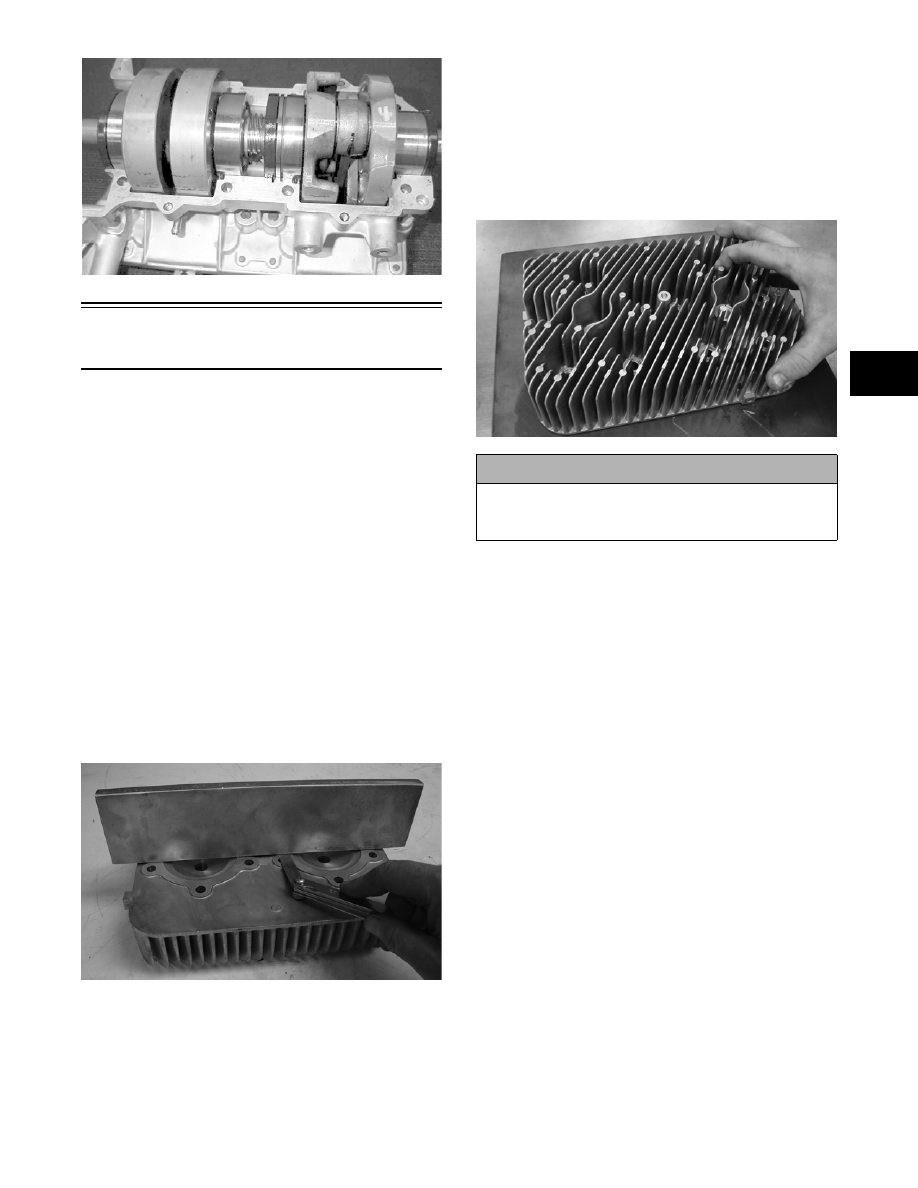Snowmobile Arctic Cat (2008 year). Manual - part 22

2-25
2
MD0246
Cleaning and Inspecting
Engine
NOTE: Whenever a part is worn excessively,
cracked, or damaged in any way, replacement is
necessary.
CYLINDER HEAD
1. Using a non-metallic carbon removal tool, remove
any carbon buildup from the combustion chambers
being careful not to nick, scrape, or damage the
combustion chambers or the sealing surfaces.
2. Inspect the spark-plug holes for any damaged
threads.
3. Inspect the cylinder head for flatness using a
straightedge and a feeler gauge. Acceptable
warpage must not exceed 0.05 mm (0.002 in.).
NOTE: If the warpage exceeds specification,
resurface the cylinder head using procedures
identified in step 4.
MD2491
4. Place the cylinder head on a Surface Plate covered
with #400 grit wet-or-dry sandpaper. Using light
pressure, move each cylinder head in a figure eight
motion. Inspect the sealing surface for any indica-
tion of high spots. A high spot can be noted by a
bright metallic finish. Correct any high spots
before assembly by continuing to move the cylin-
der head in a figure eight motion until a uniform
bright metallic finish is attained.
MD2492
CYLINDERS
1. Using a non-metallic carbon removal tool, remove
carbon buildup from the exhaust ports.
2. Wash the cylinders in parts-cleaning solvent.
3. Inspect the cylinders for pitting, scoring, scuffing,
and corrosion. If marks are found, repair the sur-
face with Ball Hone and honing oil.
NOTE: To produce the proper 45° crosshatch
pattern, maintain a low drill RPM. If honing oil is
not available, use a lightweight, petroleum-based
oil. Thoroughly clean the cylinders after honing
using detergent soap and hot water and dry with
compressed air; then immediately apply oil to the
cylinder bores. If a bore is severely damaged or
gouged, the cylinder will have to be replaced.
! CAUTION
Water or parts-cleaning solvent must be used in
conjunction with the wet-or-dry sandpaper or dam-
age to the sealing surface may result.